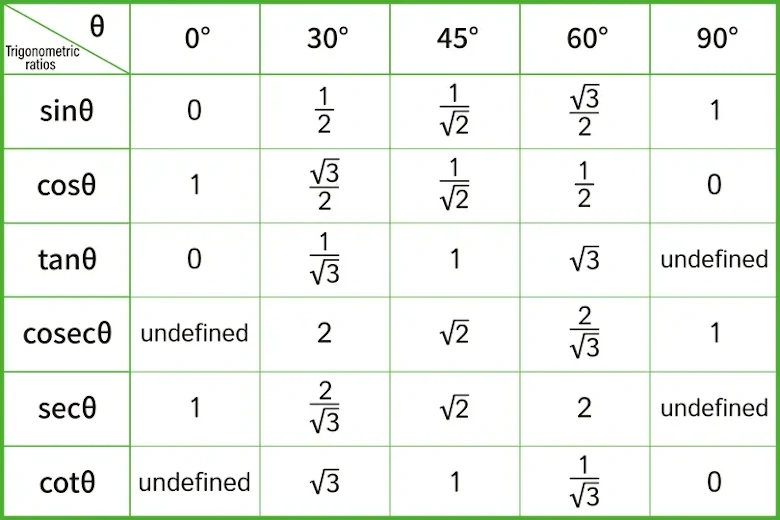What is Median and how to find it

So, Mean, Median, Mode - what exactly are they and how are they different from one another?
We hear about them a lot, and three of them feel somehow related. However, each has a distinct role in helping us make sense of data sets and numbers more easily.
While we won’t go into details about the difference between them here - you can check out our full article on Mean, Median, Mode - we’ll be taking a closer look at what median actually is, and how you can find it without breaking a sweat.
What’s Median
Let’s begin with the most basic question: What’s Median?
The median is one of three ways we can find the center of a group of numbers. We call this finding the center 'measuring central tendency.' Mean, median, and mode are the three most popular ways to do this.
You can think of the median as the middleman of a group of numbers. It's the one that splits the numbers into two equal parts, with half of them being smaller and half larger. To find the median, you first put all the numbers in ascending order, from smallest to biggest, and then you pick the one in the middle. This simple yet effective way allows us to understand a lot of data with just one number.
How to find Median
To find the median, simply line up all your numbers from smallest to biggest, and then pick the one right in the middle. But here comes the tricky part. If you have an odd number set, the median is just the one in the middle. However, if you have an even number set, you’ve to add up the two middle numbers and divide by two to get the median.
When you have odd number of observations
When you have an odd number of observations, the formula for finding the median is simple. It's just the middle value when the data is sorted in ascending order.
Alternatively, you can use this formula.
\(\displaystyle{ \mathrm{ \Bigg( \frac{\;n + 1}{2}\Bigg)^{th} \quad \text{observation} } }\)
Example 1:
Consider the test scores of \(9\) students:
\(\text{92, 88, 77, 85, 96, 78, 94, 81, 90.}\)
First, arrange the scores in ascending order:
\(\text{7, 78, 81, 85, 88, 90, 92, 94, 96.}\)
Using the formula, where n is the number of observations (\(9\) in this case):
\(\displaystyle{\mathrm{\bigg(\frac{9+1}{2}\bigg)^{th} = 5}}\)
The \(\mathrm{5^{th}}\) value in this sorted list is \(\underline{88}\), so the median test score is \(\underline{88}\).
Example 2:
Suppose you have the ages of \(7\) students:
\(\text{14, 16, 13, 15, 17, 12, 18.}\)
First, arrange the ages in ascending order:
\(\text{12, 13, 14, 15, 16, 17, 18.}\)
Using the formula, where \(\text{n}\) is the number of observations (\(7\) in this case):
\(\displaystyle{\mathrm{\bigg(\frac{7+1}{2}\bigg)^{th} = 4}}\).
The \(\mathrm{4^{th}}\) value in this sorted list is \(\underline{15}\), so the median age of the students is \(\underline{\text{15 years old}}\).
Example 3:
Imagine you have the individual height of \(11\) athletes:
\(\text{176, 182, 170, 185, 168, 178, 174, 180, 172, 169, 183.}\)
First, arrange the heights in ascending order:
\(\text{168, 169, 170, 172, 174, 176, 178, 180, 182, 183, 185.}\)
Using the formula,
\(\displaystyle{\mathrm{\bigg(\frac{11+1}{2}\bigg)^{th} = 6}}\)
The \(\mathrm{6^{th}}\) value in this sorted list is \(\underline{176}\), so the median height of the athletes is \(\underline{\text{176}}\).
When you have even number of observations
When you have an even number of observations, you find the median by taking the average of the two middle values after sorting the data in ascending order.
Here's the formula:
\(\displaystyle {\mathrm{ \frac{\bigg(\displaystyle{\frac{n}{2}}\bigg)^{th} \; observation \; + \; \bigg(\displaystyle{\frac{n}{2} + 1}\bigg)^{th} \;observation } {2}}}\)
Example 1:
Suppose you have the test scores of \(8\) students:
\(\text{85, 92, 78, 96, 88, 91, 90, 83.}\)
Now, arrange the scores in ascending order:
\(\text{78, 83, 85, 88, 90, 91, 92, 96.}\)
Using the formula, where n is the number of observations (\(8\) in this case), calculate the median as follows:
\(\displaystyle \mathrm{ Median =\frac{\bigg(\displaystyle{\frac{8}{2}}\bigg)^{th} \small{observation} \; + \; \bigg(\displaystyle{\frac{8}{2} + 1}\bigg)^{th} \small{observation} } {2}}\)
\(\displaystyle \mathrm{ Median =\frac{ 4^{th} \quad + \quad 5^{th} } {2}}\)
The \(\mathrm{4^{th}}\) term is \(88\), and the \(\mathrm{5^{th}}\) term is \(90\).
\(\displaystyle \mathrm{ Median =\frac{ 88 \quad + \quad 90 } {2}}\)
\(\displaystyle \mathrm{ Median =\frac{ 178 } {2}}\)
\(\displaystyle \mathrm{ Median =89}\)
So, the median test score is \(\underline{89}\).
Example 2:
Consider the ages of \(6\) friends:
\(\text{25, 30, 22, 28, 24, 29.}\)
First, arrange the ages in ascending order:
\(\text{22, 24, 25, 28, 29, 30.}\)
Using the formula, where n is the number of observations (\(6\) in this case), calculate the median as follows:
\(\displaystyle \mathrm{ Median =\frac{\bigg(\displaystyle{\frac{6}{2}}\bigg)^{th} \small{observation} \; + \; \bigg(\displaystyle{\frac{6}{2} + 1}\bigg)^{th} \small{observation} } {2}}\)
\(\displaystyle \mathrm{ Median =\frac{ 3^{rd} \quad + \quad 4^{th} } {2}}\)
The \(\mathrm{3^{rd}}\) term is \(25\), and the \(\mathrm{4^{th}}\) term is \(28\).
\(\displaystyle \mathrm{ Median =\frac{ 25 \quad + \quad 28 } {2}}\)
\(\displaystyle \mathrm{ Median =\frac{ 53 } {2}}\)
\(\displaystyle \mathrm{ Median =26.5}\)
So, the median age of the friends is \(\underline{26.5 \text{ years}}\).
Example 3:
Imagine you have the exam scores of \(10\) students:
\(\text{75, 80, 88, 92, 70, 85, 78, 90, 86, 82.}\)
First, arrange the scores in ascending order:
\(\text{70, 75, 78, 80, 82, 85, 86, 88, 90, 92.}\)
Using the formula, where n is the number of observations (\(10\) in this case), calculate the median as follows:
\(\displaystyle \mathrm{ Median =\frac{\bigg(\displaystyle{\frac{10}{2}}\bigg)^{th} \small{observation} \; + \; \bigg(\displaystyle{\frac{10}{2} + 1}\bigg)^{th} \small{observation} } {2}}\)
\(\displaystyle \mathrm{ Median =\frac{ 5^{th} \quad + \quad 6^{th} } {2}}\)
The \(\mathrm{5^{th}}\) term is \(82\), and the \(\mathrm{6^{th}}\) term is \(85\).
\(\displaystyle \mathrm{ Median =\frac{ 82 \quad + \quad 85 } {2}}\)
\(\displaystyle \mathrm{ Median =\frac{ 167 } {2}}\)
\(\displaystyle \mathrm{ Median =83.5}\)
So, the median exam score is \(\underline{83.5}\).
 SG
SG  VN
VN 













